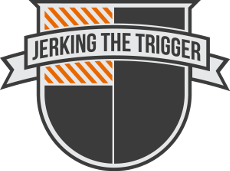I recently bought a Brunton 15TDCL Compass based on online research. An old, beat up, second hand Silva Ranger was my first “good” compass as a boy and I loved it. I wish I knew where it was.
The compasses that are sold in the USA these days as Silva compasses are not true Swedish made Silvas at all. A company called Johnson Outdoors Inc owns the rights to the Silva name in the US. They sell compasses that are made in various Pacific countries that are branded with the Silva name. I have a couple of recent Silva products that work very well but they have a reputation for poor quality control so you might be rolling the dice when you purchase a Silva compass.
People in the know knew that if you wanted a real Silva Ranger, you could purchase a Brunton 15TDCL (AKA Elite 360 or Nexus Elite). The 15TDCL was the Swedish made Ranger type 15 compass, brought into the USA under the Brunton brand. I thought this was the case when I purchased a 15TDCL recently.
Sadly, it appears that now the 15TDCL is also not made in Sweden. My recent example states that the compass was made in China on the packaging. The older models used to state “Sweden” proudly right on the baseplate of the compass. Now they list no country of origin on the compass itself.
The good news is that the 15TDCL appears to be a decent compass in spite of the manufacturing change though it is definitely not the equal of my old Silva Ranger. If I were going to spend the money all over again, I would have just purchased another Suunto MC-2.
I hope to do a review of the 15TDCL and the EXCELLENT Suunto MC-2 Global in the future.
If you are looking for a quality compass that is not made in the Pacific somewhere you could choose a Suunto (Finland) or a Cammenga (USA).

I just got this http://www.amazon.com/Brunton-Eclipse-Adventure-Racing-Compass/dp/B000059HMJ/ref=sr_1_26?ie=UTF8&s=sporting-goods&qid=1276702990&sr=8-26 and was very pleased with it.
I don’t plan to use it with a GPS, but it has a useful way to keep you on azimuth.
That compass is on my short list of ones that I would like to try! It is hard to be the basic simplicity of a baseplate compass. It is nice to have the UTM grids too.
It’s pretty cool. The lanyard that came with it was cheap nylon weave – quickly replaced with 550 cord long enough to carry around my neck with a whistle on the end.
I like the “floating dot” and it’s definately designed for adventure racing.
For pure overland dead-reckoning land nav, military-style, it’s hard to beat a lensatic compass (because that’s how we’re trained!) – but if you’re using this and referring to a map to orienteer, it’s hard to beat.
I also have come to love lensatic compasses but I was never in the military. They are what I am used to and they make getting a relatively precise azimuth fairly easy.
Lately, I have been forcing myself to use different compasses. The Brunton 15TDCL is really growing on me inspite of my initial disappointment. The only compass that I have tried so far that comes close to threatening my Cammenga lensatics is the Suunto MC-2 Global. It is a phenomenal compass. The global needle is amazing.
The benefit of the military lensatic compass is how you shoot your azimuth, up against your cheek, using the sighting wire to get your dead reckoning waypoint identified.
They are tricky to break brush with, though, as the needle can get restless, and a 1 or 2 degree bearing deviation over 500m-1000m can mean the difference between a successful op and “wandering around aimlessly”
Glad the new compass is growing on you a bit – it is very valuable to work with different equipment, so you stay focused on the principles and fundamentals of the task and not the technique particular to the gear at-hand.